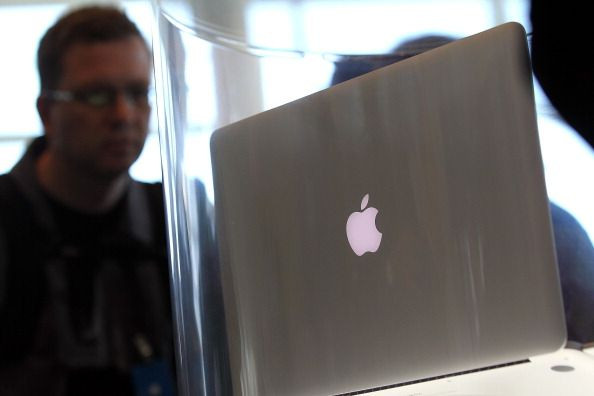Apple Patents ‘Futuristic’ MacBook ‘Living Hinge’

KEY POINTS
- Apple has patented a new hinge design for future MacBooks
- The hinge design is not something that Apple has used before
- Apple's patent says the new hinge can also be used on iPad covers, wired earpods and more
Apple is working on a new MacBook hinge design called a "living hinge," according to a patent recently published by the U.S. Patent and Trademark Office.
This hinge is of one piece with the top and bottom half of the MacBook's casing, and is not something that the Cupertino tech giant has used at any time in the past, Patently Apple noted.
The patent, titled “Interlocking flexible segments formed from a rigid material,” describes in detail how the hinge looks like and how it works. Basically, the hinge, or flexible portion of the MacBook, will be made out of the same rigid material used to create the device's body. This rigid material might be, but is not limited to, metals, alloys, hard plastics, and the like.
During the manufacturing process, Apple will take a single piece of rigid material and will “selectively” remove some of its portions to create a geometric pattern in it. This geometric pattern will determine the bending radius of the material. In easier to understand words, Apple will make the rigid material as bendable as possible by poking an appealing pattern of holes in it.
Patent illustrations show that the resulting structure will have the capacity to bend like a clamshell, similar to how traditional laptops open and close. Currently, laptops use the traditional hinge design where the top and bottom portions are separate from each other and are joined only via hinges located at various points at the middle of the device.
Apple's patented design, however, will mean that future MacBooks could feature a unibody design where the top half, which houses the display, and the bottom half, which houses a keyboard, trackpad and other components, are seamlessly connected to each other via an all-new patterned hinge system.
Apple doesn't limit the new hinge design to the MacBook, however. The resulting structure, the patent said, can then be used as an enclosure, a cover for an electronic device, or as hinges to some devices. This means other iDevices might feature the new living hinge design.
Patent illustrations show that the new hinge design can be used for iPhone and iPad accessories such as smart covers. The new hinge design can also be used for wired earpods.

© Copyright IBTimes 2025. All rights reserved.



















